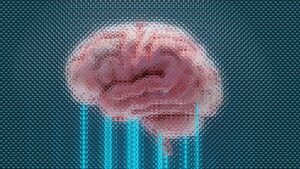A Conflict Between Open-Source and Privately Owned Artificial Intelligence Models

A Conflict Between Open-Source and Privately Owned Artificial Intelligence Models
An entirely new age has begun in the field of artificial intelligence, one that is not just characterized by innovation but also by philosophy. Open-source artificial intelligence, which values transparency, accessibility, and collaboration, and proprietary artificial intelligence, which places a higher priority on control, security, and commercial benefit, are the two conflicting visions that are now dividing the field. This gap is not only technical; rather, it is a representation of two distinct ideologies of who should be in charge of shaping the technological future of intelligent machines and how power should be dispersed.
The Emergence of Open-Source Artificial Intelligence
A grassroots initiative to democratize machine learning was the origin of open-source artificial intelligence. Freely available model architectures, datasets, and training code were distributed by researchers and developers, making it possible for anybody to investigate, edit, or enhance these resources. TensorFlow, PyTorch, and Hugging Face’s Transformers library are just a few examples of the innovations that were made possible as a result of this culture of openness, which hastened product development. Rather than competing against one another in isolation, communities formed around these technologies, building upon the contribution of each community member.
Openness and cooperation are the cornerstones of the core philosophy.
Transparency is the most important aspect of open-source artificial intelligence. Open models give researchers the ability to investigate the decision-making processes of systems, recognize the existence of possible biases, and reproduce scientific findings. Trust and accountability are attributes that are sometimes absent from black-box proprietary systems, but this transparency helps to nurture both of those qualities. As an additional benefit, open collaboration makes it possible for smaller businesses, institutions, and independent researchers to take part in determining the growth of artificial intelligence, rather than leaving the development of AI to a select group of firms.
The Ascent of Privately Owned Artificial Intelligence Titans
On the opposite side of the battlefield are artificial intelligence models that are proprietary. These are enormous systems that have been trained privately, such as OpenAI’s GPT series, Anthropic’s Claude, and Google’s Gemini. These businesses invest billions of dollars in the construction of foundation models that are not open to the general public for examination. The logic behind their position is crystal clear: the expense, the complexity, and the possibility of misuse of such technology call for stringent oversight. Due to the fact that they have access to vast private datasets, high-performance computing clusters, and professional research teams, these closed models are typically more sophisticated than open models.
Control, along with Power and Data
The control that is exercised over data, performance, and distribution is the fundamental component of the proprietary model. It is possible for businesses to guarantee consistency, reliability, and the protection of their brand by keeping models closed. On the other hand, control also results in the accumulation of power. In situations where only a handful of businesses own the most capable models, there is a risk that innovation may become centralized. Since this has occurred, questions have been expressed regarding monopolization, ethical monitoring, and the capacity of smaller firms to compete in a field that is dominated by infrastructures that cost billions of dollars.
Invention through the Use of Openness
Open-source artificial intelligence continues to innovate at a quick pace, despite having a lack of financing in comparison to tech giants. It has been proved through projects like as Mistral, Llama, Falcon, and Stable Diffusion that community-driven models are capable of competition with or even surpassing their proprietary counterparts in terms of flexibility and customisation. As a result of thousands of developers iterating simultaneously, open ecosystems change more quickly. These developers are responsible for building applications, refining models, and sharing discoveries. An explosion of innovation arises as a consequence, which is something that proprietary systems frequently struggle to match.
A Discussion Regarding Safety and Security
The issue of safety is one of the most prominent reasons against open-source artificial intelligence. Some people are concerned that powerful open models could be exploited in inappropriate ways, such as for the purpose of manufacturing disinformation, automating cyberattacks, or producing damaging content. The monitoring and regulation of proprietary systems, on the other hand, may be accomplished with more ease. On the other hand, proponents of open-source software claim that openness actually improves safety since it enables more eyes to identify weaknesses and biases. There is ongoing discussion on whether it is more prudent to restrict access or to disseminate information freely in order to construct collective safeguards.
The Disparity in Economic Conditions
Both open and closed artificial intelligence systems have fundamentally distinct economic strategies. The success of proprietary artificial intelligence is dependent on subscription-based services, enterprise licensing, and exclusive collaborations. Donations, community support, or hybrid approaches, in which the base model is free but commercial versions offer improved features, are frequently the sources of funding for open-source models. This economic discrepancy will influence the future of accessibility: closed models are geared toward corporate clients, whereas open models empower individual producers, educators, and small companies.
The Importance of Regulation.
There is a growing trend among governments all over the world to enter the arena of artificial intelligence. The European Union’s Artificial Intelligence Act and the United States Executive Order on Artificial Intelligence are examples of policies that try to govern openness, data protection, and accountability. Open-source communities are unintentionally put at a disadvantage as a result of regulations, which frequently favor larger corporations who are able to afford the costs of compliance. Creating regulations that protect users without impeding the innovation and inclusivity that open development makes possible is a challenge that needs to be overcome.
A Priority for Cooperation Over Competition
In spite of the competition, the hypothetical future that is most likely to occur is not a complete win for either side, but rather convergence. The adoption of hybrid tactics by numerous businesses, which include the release of partially open models or the open-sourcing of older versions of private systems, is prevalent. In the case of OpenAI, for example, the organization started off as an open project before shifting toward a capped-profit structure. There is a happy medium represented by Meta’s Llama models, which are strong while yet being licensed with constrained usage restrictions. The next phase of artificial intelligence development may be defined by this combination of openness and protection.
What Is at Stake Ethically
The argument between open and closed systems touches on fundamental ethical problems, which extend beyond the realms of economics and innovation. Who gets to pick what the artificial intelligence learns? Who is in charge of organizing the flow of creativity and knowledge? Supporters of open-source software claim that artificial intelligence ought to be a public benefit, a shared human achievement that is available to everyone. Proponents of proprietary rights argue that unrestricted openness could result in the release of potentially harmful instruments without any accountability. Finding a middle ground between these two points of view will not only decide how artificial intelligence develops, but also who will benefit from its advancements.
The Influence on the Equality of the World
Access to artificial intelligence will have a significant impact on the evolution of the world for decades to come. The disparity between nations with abundant resources and those with low resources may be exacerbated by proprietary systems, whereas open models have the potential to help equalize opportunities. The use of open-source artificial intelligence encourages global involvement in the digital economy by providing academics in poor nations with the ability to train, adapt, and deploy models locally. In this sense, openness is not merely a choice at the technological level; rather, it is a choice at the social and geopolitical level.
The Path Forward for the Conflict
Because of the rapid advancement of AI capabilities, the conflict between openness and control will only become more intense. Both open and private models have their advantages: open models encourage variety and collaboration, while proprietary models guarantee stability and responsible deployment. The future may be determined by the degree to which these philosophies are able to coexist, with the goal of sharing knowledge wherever it is possible and protecting power wherever it is required.
The conflict between open-source and proprietary artificial intelligence models is more than just a war for market dominance; it is a struggle over the essence of artificial intelligence for the most part. It poses the question of whether the future of machine intelligence will be accessible to the collective imagination of humanity or whether it will continue to be a well guarded secret for a select few. Not only will the answer determine how artificial intelligence develops, but it will also determine how power, creativity, and knowledge are dispersed in the 21st century.




